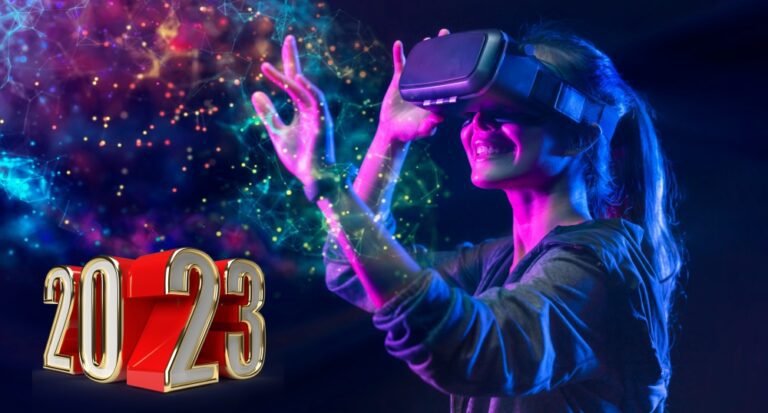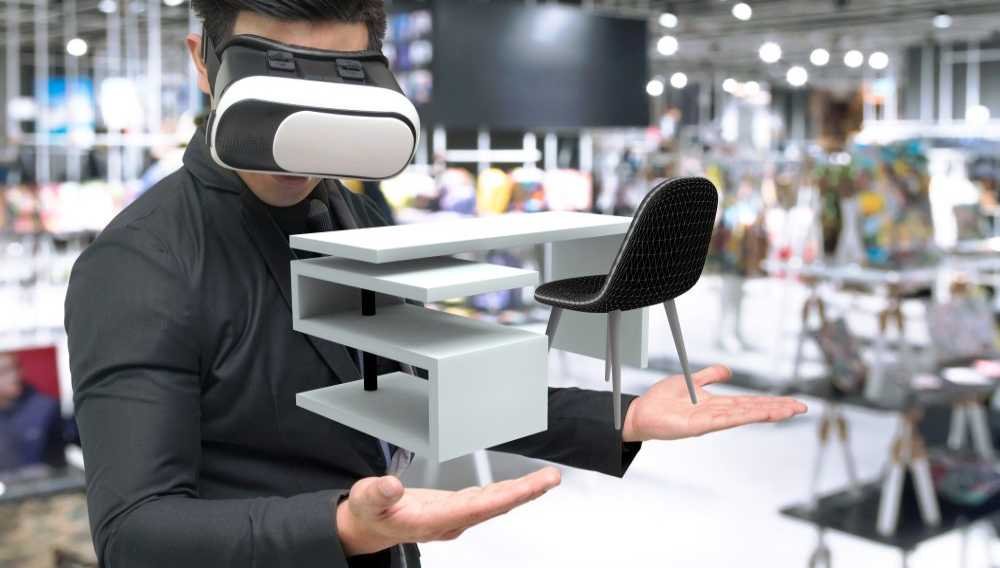Why Companies will Adapt to AR and VR Technology?
Posted On July 19th, 2024
Array
Companies are rapidly embracing Augmented Reality (AR) and Virtual Reality (VR) due to the transformative potential these technologies offer. AR and VR create opportunities to significantly enhance customer experiences. Imagine virtually trying on clothes or seeing furniture placed in your home before you buy. VR allows for immersive brand storytelling, transporting users into a brand’s world. These technologies can also revolutionize marketing and sales with interactive campaigns and targeted product demos. The benefits extend beyond customer experience, with AR and VR poised to improve training, education, and overall business efficiency. From remote collaboration on projects to streamlined maintenance procedures, AR and VR offer a competitive edge. While challenges like cost and accessibility exist, advancements in technology are continuously making these tools more viable. As AR and VR become more integrated with everyday devices and the Internet of Things, we can expect a future where the physical and virtual worlds seamlessly blend, further transforming the way businesses operate and connect with customers.
It is an exciting experience that may not at all resemble the real world or it may be very similar. Augmented Reality and Virtual Reality are mainly applied in the commercial sector, entertainment, specifically, video games, education, healthcare, defense, and many more. AR/VR plays a key role in marketing. Businesses are now utilizing AR/VR technology, their applications, and various techniques to boost sales and attract clients.
Following Are the Influencing factors for Brands to Adopt AR and VR Technology
Virtual Reality in Marketing

Virtual Reality connects the experience and the activity. Thus, utilize VR (Virtual Reality) to provide a virtual reality experience to advertise goods and services. Also, you can use it to advertise already-released goods, letting customers know what is available and what is about to hit the market.
Augmented Reality in Marketing

Customers receive unique experiences because of (Augmented Reality) AR. As AR/VR technology is accessible through mobile devices, consumers will find it simple to adapt to it. Moreover, businesses will find it useful for promoting their operations, & goods, and boosting sales. Before purchasing a product, users can experience it via augmented reality (AR).
Engaging Clients

Engage customers with a product, an organization, or even the real environment through the use of AR and VR. With AR technology, for instance, they can experience a product before they decide to buy it if they have chosen it but are unsure or puzzled about it. Thus, they have virtual experiences that interact with the actual world because of these technologies.
Customized Ads

Ad experiences that are tailored to each individual are now possible thanks to AR/VR technologies. One of marketing’s techniques is programmatic advertising, messaging, and marketing at the personal level, and this will soon saturate everyone’s daily life.
Enhanced PR Strategy

Businesses have a lot of options thanks to AR and VR to engage with clients’ offers in fresh, immersive ways. Thus, they do not require desk-side visits or other forms of traditional media familiarization. For instance, clients may now explore events, homes, travel destinations, and more to learn what makes them unique without planning a visit or journey.
Virtual Environment
With the development of AR/VR technology, we can expect this to replace or significantly alter the event business. This helps companies to enhance their brands accordingly.
AI in Metaverse
The metaverse is a type of “embodied internet.” You can dive into it (using VR) or bring it into reality (via AR). Although virtual worlds are becoming more and more popular, augmented reality may be the future and it will be present everywhere in the metaverse. Due to its widespread use, the metaverse can access through see-through lenses as an augmented reality environment.
VR in Metaverse
Customers can enter the metaverse through virtual reality, closing the perceived gaps between digital and physical realities. We will be able to explore new surroundings and increase the accessibility of reports by using virtual variants of people, items, and landscapes. In a nutshell, it’s a virtual reality world where you may go to work, go to school, play games, watch concerts, browse shelves at stores, and much more without ever leaving your (physical) house.
Getting Clients’ Attention
One of the quickest methods to attract clients’ attention is through VR and AR. As so many people adore technology and find it exciting and educational, leverage AR/VR to attract additional clients. Moreover, customers can have a terrific purchasing experience by combining various technologies with AR, VR, or both.
AI with VR & AR

A high level of machine intelligence is required the strengthening the link between the physical and digital worlds. For AR and VR to promote trade, there is a requirement for artificial intelligence. In order for our robots and machines to recognize us, it can also aid in natural language processing. AI integration into augmented and virtual reality to develop intelligent immersive worlds was only a matter of time.
AI has the ability to quickly evaluate massive amounts of data in order to generate insights and inspire action. Use AI for decision-making or combined with automation for low-touch tasks (which is the case for the majority of agency applications). Additionally, AI supports computer vision, simultaneous location and mapping, and other technologies that let machines comprehend our physical surroundings.
The Bottom Line
Virtual reality and augmented reality encourage greater levels of innovation and engagement while assisting businesses in meeting the unique needs of their clients. Though it was initially designed with the younger generation in mind, this technology has advanced significantly and is now finding applications in the industrial sector. And businesses that are ready to use this technology now and adopt it will benefit from it.
FAQs

VR and AR are incredibly useful technological tools for teaching because they can immerse users in experiences. Users of VR can alter their surroundings and even carry out tasks without physically going to the workplace.
This is so because when someone interacts with you in a virtual or digital setting, a lot of information about their behavior, responses, and interactions becomes available. Customers that lead increasingly digital lifestyles would not even visit a physical showroom; instead, they will put on a headphone and appear in a virtual one.
Businesses can provide customers with tailored services thanks to augmented reality (AR). Customers can virtually see in detail how the product matches their demands by utilizing this technology before making a purchase. Also, this enables clients to purchase the goods they require whenever it is convenient for them.
Related Posts

Top 5 Typing Software If You Learn Typing: Practice Software
Posted on July 23rd, 2024
Typing is a crucial skill in today’s digital age, and whether you’re a student, professional, or just looking to improve your typing skills, having the right software can make...
Read More →
5 Most Popular Machine Learning Software Tools
Posted on July 23rd, 2024
One option for businesses to change how they use big data to better understand their consumers’ behavior, satisfaction, and/or loyalty is through machine learning (ML). Users might not even...
Read More →
Advantage of Digital Marketing in Business?
Posted on July 22nd, 2024
The advent of digital marketing has transformed the way businesses market their offerings. As technology continues to advance, establishing a robust online presence has become a fundamental requirement for...
Read More →
What is CAD?
Posted on July 22nd, 2024
Computer-Aided Design, commonly known as CAD, is a transformative technology that has significantly impacted various industries, including engineering, architecture, product design, and manufacturing. CAD systems utilize computer software to...
Read More →© All Copyright Reserved japjitravel.com
Leave a Comment :